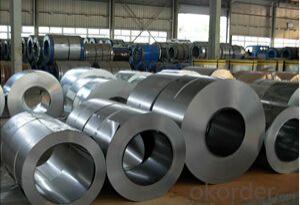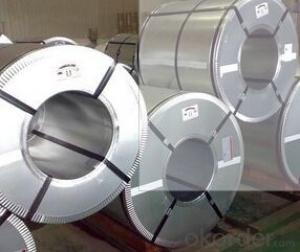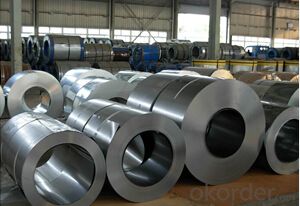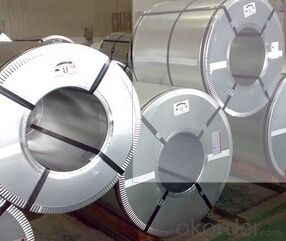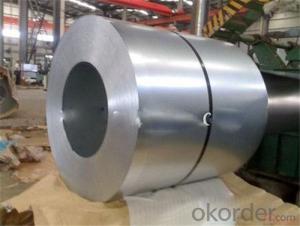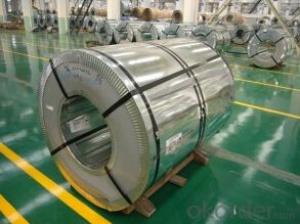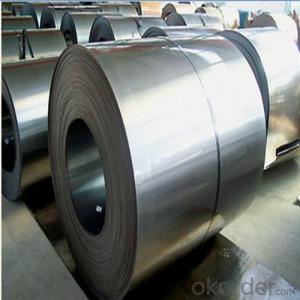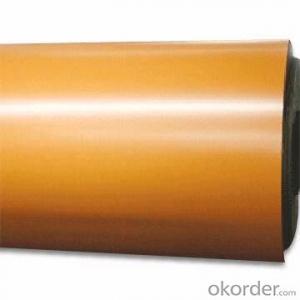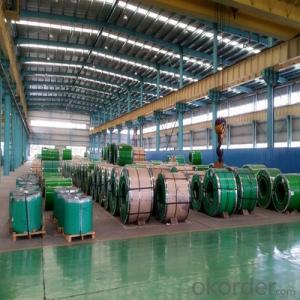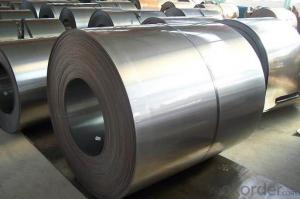0.25mm-3mm Cold Rolled Steel Coils for Construction
- Loading Port:
- Tianjin
- Payment Terms:
- TT OR LC
- Min Order Qty:
- 25 m.t.
- Supply Capability:
- 50000 m.t./month
OKorder Service Pledge
OKorder Financial Service
You Might Also Like
Cold Rolled Steel Coils description:
Standard:ASTM,DIN,GB,JIS
Grade:SPCC, DC01, ST12
Thickness:0.25-3mm
Type:Steel Coil
Technique:Cold Rolled
Surface Treatment:oiled
Width:1000-1500
Length:in coil
Packaging & Delivery:
| Packaging Detail: | with water proof or according to the customer's requirement |
| Delivery Detail: | within 20 days after getting the prepay |
0.25mm-3mm COLD ROLLED STEEL COIL:
Grade | SPCC, DC01, ST12 |
Thickness | 0.25mm-3mm |
Width | 1000-1500 |
Coil ID | 508mm |
Max Coil Weight | 25tons |
Surface treatment | Oiled/Unoiled |
Packaging Detail | Strapped with min three strapping strips, covered by anti-water paper and plastic film, fixed on the iron or wooden pallets by strapping strips and covered by plastic bag to prevent damage from transportation |
Product Capacity | 20000Tons/MONTH |
Payment Terms | T/T,L/C at sight |
Delivery Time
| 15-30days after receipt the deposit or Original L/C |
Certification | ISO9001 |
Usage | automobile, printed metal pail, building, building materials, and bicycle, etc. Additionally, it is the best material to manufacture organic coated strip. |
The special order can be negotiated |
- Q: What are the environmental benefits of using steel coils?
- There are several environmental benefits associated with using steel coils. Firstly, steel is a highly recyclable material. Steel coils can be easily recycled and repurposed into new steel products, reducing the need for mining and extraction of raw materials. Recycling steel also requires less energy compared to producing it from scratch, resulting in lower greenhouse gas emissions and a smaller carbon footprint. Additionally, steel is known for its durability and longevity. When used in construction or manufacturing applications, steel coils can last for decades without losing their structural integrity. This reduces the need for frequent replacements, which in turn reduces the consumption of resources and energy required for production. Furthermore, steel is highly resistant to corrosion and weathering, making it a suitable choice for outdoor applications. This resistance to decay means that steel coils can withstand harsh environmental conditions and maintain their functionality for extended periods. This reduces waste generation and the associated environmental impacts of replacing damaged or deteriorated materials. Lastly, steel is a versatile material that can be used in a wide range of industries and applications. Its versatility allows for efficient use of resources, as steel coils can be easily adapted and customized to meet specific project requirements. This versatility also enables the use of steel in sustainable building designs, such as energy-efficient structures or green buildings that incorporate renewable energy systems. In conclusion, the environmental benefits of using steel coils include their recyclability, durability, resistance to corrosion, and versatility. By choosing steel coils for various applications, we can contribute to resource conservation, reduced carbon emissions, and a more sustainable future.
- Q: What are the advantages of using galvanized steel coils?
- There are several advantages to using galvanized steel coils. Firstly, galvanized steel is highly resistant to corrosion, which means it can withstand exposure to moisture and other harsh environmental conditions without rusting. This makes it a durable and long-lasting material for various applications. Secondly, galvanized steel coils have a protective zinc coating that acts as a barrier against damage and provides excellent structural strength. Additionally, galvanized steel coils are versatile and can be easily formed, welded, and painted, making them suitable for a wide range of industries and projects.
- Q: What are the different steel coil finishes available?
- There are several different steel coil finishes available, including hot rolled, cold rolled, galvanized, and stainless steel finishes.
- Q: What are the different types of steel finishes for coil protection?
- There are several types of steel finishes used for coil protection, including galvanized, painted, and coated finishes. Galvanized steel is coated with a layer of zinc to protect against corrosion. Painted steel is coated with a layer of paint for aesthetics and additional protection. Coated finishes can include various types such as epoxy, polyurethane, or polyester, which provide different levels of durability and resistance to corrosion.
- Q: I wanted to get a cheapo ring and I found one I like, but it's stainless steel. Is that bad? Will it get dull and tarnished fast?
- a lot of people that do a lot of manual labor with their hands prefer stainless steel because it can withstand potential damage on the job.
- Q: i recently got an industrial piercing and instead of getting pierced with a metal bar i have a PTFE bar .. i eventually want to put in a metal bar but what kind do i get? whats the difference between a surgical steel and titanium bar?thanks
- 316L steel is the most basic metal used in body jewelry. It is the basic requirement of metal to be used in initial piercings and for healing. There are better grades but usually they cost more as well. For most people this grade of steel works just fine. Titanium is usually preferred over steel because it contains no nickel and it weighs almost 50% less than steel. Titanium can come in plain polish which looks just like steel AND it can come in a variety of colors (but NOT red or black). Titanium is super for people with sensitive skin to steel. It does cost a little more but is well worth it.
- Q: Does anyone know if there is any info on Steel Manufacturing techniques, utilyzing electro/mechanical methods in order to create carbon nanotubes from the %C already inherant in the steel. In other words just modifying the Geometry of the Carbon the already makes up some of the steel.
- I don't think that would work. First off, there's not enough carbon in steel - even very high carbon steels are only about 2% carbon. Second, the iron atoms in steel form a crystal lattice, in the shape of a cube, with another iron atom in the middle of the cube. Each cube is about 0.3 nm per side. Carbon atoms work their way into the crystals and displace the iron atoms. But a carbon nanotube is around 1 nanometer in diameter - that's 3 times as big as the iron lattice! So a nanotube wouldn't fit. One thing you might do, however, is make a composite - mix the materials together on a scale a little bigger than the atomic scale that the iron and carbon mix to make steel. Just like a carbon fiber bicycle frame or ski pole is strands of carbon (much bigger and not as strong as nanotubes) held together with epoxy, you could hold nanotube strands together with metal. Not sure it would be good for armor, but if you can figure out a way to do it, I'm sure someone will come up with a use for it!
- Q: Can steel coils be custom-made to specific requirements?
- Yes, steel coils can be custom-made to specific requirements.
- Q: Bronze came before steel, right? thanks
- i dunno
- Q: Corten steel tends to overheat in hot environments? (for example copper heats up under the sun)
- Weathering steel, best-known under the trademark COR-TEN steel and sometimes written without the hyphen as Corten steel, is a group of steel alloys which were developed to obviate the need for painting, and form a stable rust-like appearance if exposed to the weather for several years. Overheating ? It's not possible for a metal to get hotter than it's environment unless there is a source of radiation. The sun shining on a metal will heat up a bit, as will any material, but the amount is small and depends on the surface reflectivity. Define what you mean by overheating. .
Send your message to us
0.25mm-3mm Cold Rolled Steel Coils for Construction
- Loading Port:
- Tianjin
- Payment Terms:
- TT OR LC
- Min Order Qty:
- 25 m.t.
- Supply Capability:
- 50000 m.t./month
OKorder Service Pledge
OKorder Financial Service
Similar products
Hot products
Hot Searches
Related keywords
